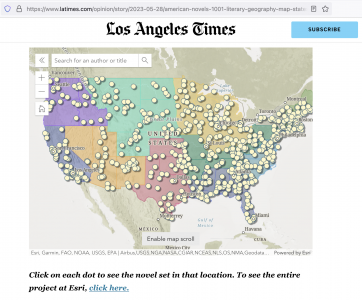
Image: Les chenes d’Apremont by Théodore Rousseau.
If, like me, you love plants, art, and history you’ll be pleased to learn more about the (sort of) new field of ecocritical art history.
An exhibit, Natural Histories, at the Yale Art Museum delves into ecocriticism using ten landscape paintings. ‘“When historically oriented, ecocriticism may bring attention to neglected evidence of past ecological and proto-ecological sensibility or it may cast canonical works and figures in a new light by revealing previously unnoticed complexity regarding environmental concerns. What distinguishes ecocriticism is an effort to reorient and widen the scope of cultural studies by emphasizing the ways in which human creativity — regardless of form (visual, verbal, aural) or time period (ancient, modern, contemporary) — unfolds within a specific environment or set of environments, whether urban, rural, or suburban,” art historian Alan C. Braddock wrote in the journal American Art.’
A landscape painting, like the oaks shown in Rousseau’s work above, can show the effects of deforestation and grazing, for example.
Although I’ve never heard of artists returning to sites to repaint a landscape, rephotographing has been done by photographers for many years. Wikipedia describes it as follows. “Rephotography continues to be used by the scientific world to record incremental or cyclical events (of erosion, or land rehabilitation,[8] or glacier flow[9] for example), or to measure the extent of sand banks in a river, or other phenomena which change slowly over time,[10] and in gathering evidence of climate change.[11][12][13]
My own introduction to it was through the work of Mark Klett and his book Second View: the rephographic survey project. The work was done in 1977 and published by UNM Press in 1984. Klett has gone on to do additional work in this style. This link goes to the books page on his website but be sure to check the projects tab for some spectacular and sobering paired images. One such image is a Jeffrey pine photographed by Ansel Adams in 1940 and rephotographed, dead, by Klett and Wolfe in 2002, a mere 60 years later.



